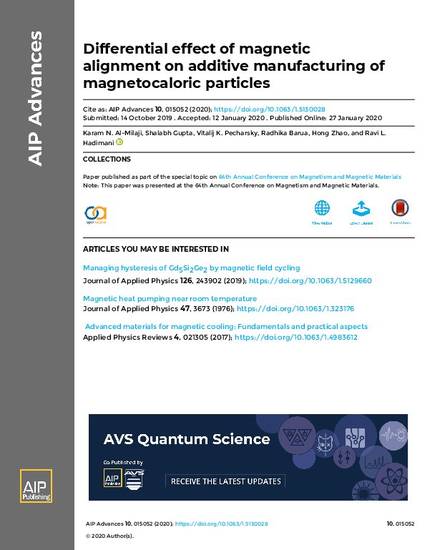
Additive manufacturing of materials using magnetic particles as feedstock has attracted tremendous attention during the past decade owing to its ability to tune both shape and magnetocrystalline anisotropy, which can significantly enhance the magnetic characteristics of materials. We demonstrate that the magnetic response of multilayered thin films of Gd5Si4 can be tailored by controlling the external magnetic field during inkjet printing. The external magnetic field aligns the magnetic particles along their magnetic easy axis, enhancing the magnetic anisotropy of the printed films. Our work demonstrates the ability to print thin magnetic films with a defined anisotropy in any chosen direction with the potential to approaching magnetic properties of corresponding single crystalline materials.
Available at: http://works.bepress.com/rlhadimani/40/
